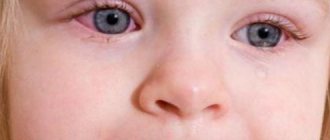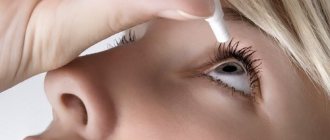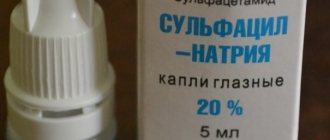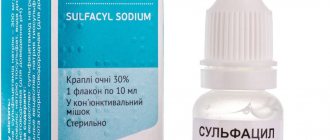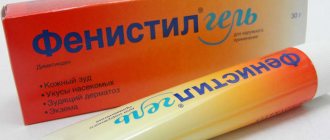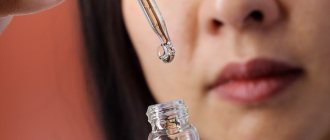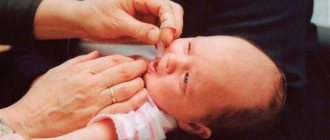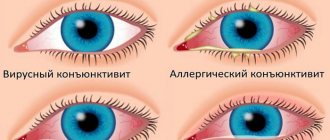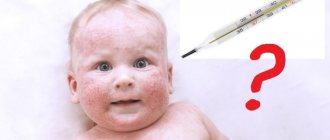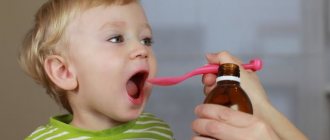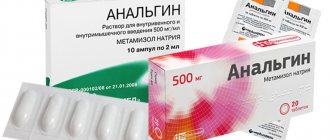Unfortunately, every year more and more children are registered who have allergies from birth. This disease is commonly called the scourge of our time. It manifests itself not only in the form of a rash on the body, which can burn and itch, but also as inflammation of the mucous membranes of the eyes.
Today we want to take a closer look at what the main symptoms of this disease are and what eye drops can be used for children with allergies.
What is an allergy
An allergic reaction is an increased reaction of the immune system to various substances , as a result of which the body often perceives ordinary substances as foreign and dangerous elements, and begins to actively produce special antibodies against them.
In fact, this is a perverted form of body defense. This condition is an individual disease, because in each person it is provoked by different irritants, manifests itself differently and affects different organs, one of which is the eyes. This reaction occurs after contact of the mucous membrane of the eye (conjunctiva) with an irritant (dust, gases, small particles of various origins, bacteria and drugs).
This disease can occur in a matter of hours and last for weeks or even months, indicating that the disease has become chronic.
It can appear before our eyes as follows:
- Itching and burning in both eyes at the same time.
- Redness of the mucous membrane of the eye.
- Copious and prolonged lacrimation that cannot be controlled.
- Swelling and swelling of the eyelids.
- The appearance of photosensitivity.
- Purulent discharge from the eyes is possible, which indicates the presence of infection and possible allergic conjunctivitis.
How to choose anti-allergy eye drops for children
Before starting treatment for an allergy, it is necessary to determine the cause of the appearance of its symptoms in front of the child. After all, blocking the baby’s contact with the irritant is the main treatment and prevention of the occurrence of such a condition. However, to help an organism that is not yet fully mature, doctors prescribe medications that help remove inflammation and restore the conjunctiva.
There are 3 main groups of drugs that are used in this case:
- Antihistamines. Drugs of this type are most often used in the treatment of babies of different ages. They suppress the production of histamines in the body, are quite effective and do not have pronounced side effects, therefore, as a rule, they do not cause sudden and serious complications.
- Vasoconstrictors. Used in cases where other treatment does not help and under the strict supervision of a doctor. Such substances do their job well, but can be addictive. As a rule, such eye medications are prescribed to adolescents over 12 years of age. The decision to use such drugs can only be made after consultation with the treating doctor.
- Hormonal. They eliminate all symptoms of the disease and eliminate inflammation in a short time. However, it is not recommended to use them in children under 6 years of age, since improper and long-term treatment with such drugs has a bad effect on the functioning of other organs. What is important here is strict dosage and confidence that other therapy does not give positive results.
The choice of eye drops for a baby should always begin with the consultation of a competent specialist who can assess the risks and benefits of taking these drugs, as well as prescribe the necessary dosage.
Which drops to choose?
The human eye is quite sensitive to external influences. Pollen, mold, dust, animal hair, volatile chemicals. substances - all of these can provoke an allergic reaction. Manifestations of eye allergies can vary from mild inflammation of the eyelids and watery eyes to severe damage to the retina or optic nerve.
What anti-allergy eye drops does the pharmacological market offer?
All anti-allergy eye drops act locally. They do not fight the allergy itself. Their main purpose is to relieve itching, remove lacrimation, swelling, redness, photophobia and other manifestations of allergies.
Antihistamine eye drops
The active ingredients of these drops can quickly suppress an allergic reaction. The main working components of antihistamines function as follows:
- stop the release of histamine.
- reduce the activity of mast cells (since they form various allergic reactions).
- improve the condition of cell membranes, thereby limiting the contact of cells with the allergen.
Systemic antihistamine drops have a similar effect.
The most effective antihistamine eye drops against allergies include:
Anti-inflammatory
Drops that suppress inflammation. There are 2 types:
- non-steroidal (Acular).
- corticosteroids (Lotoprednol);
Such drops effectively relieve itching and allergic swelling. However, they can only be used under the close supervision of the attending physician. Remember that anti-allergenic and anti-inflammatory drops are prescribed when allergic-infectious inflammation begins in the superficial layer of the eye.
Vasoconstrictor drugs
Reduce eye redness, lacrimation, itching, pain. With long-term use, there is a possibility of addiction: if such drops are discontinued, allergy symptoms may return.
In addition, vasoconstrictor drops are quickly absorbed into the body’s bloodstream and have an effect on every organ.
The main vasoconstrictor eye drops that can be recommended are:
The ophthalmologist can prescribe medicinal drops from a specific group or from several at once.
Important: anti-allergy eye drops for pregnant women are selected taking into account the woman’s general condition, from the point of view of probable benefits and harms. Burying
Basic Rules:
Burial. Basic Rules:
- Taking any drops should be discussed with your doctor.
- Treatment cannot be canceled at your own request.
- Do not change the dosage yourself.
- contact lenses for the eyes can be inserted 10 minutes after instillation.
Anti-allergenic eye drops can effectively counteract allergic reactions to irritation, but you should not expect a miraculous effect. In most cases, the allergy will not go away, but only the symptoms of the disease will disappear.
Among other things, anti-allergy eye drops can cause many side effects and have contraindications, which means that only a qualified doctor should prescribe them, choose the dose and frequency of use.
Did the article help? Perhaps it will help your friends too! Please click on one of the buttons:
Allergy drops for newborns
- The antihistamine drug Zodak is considered the best drops for children under 1 year of age, which are approved for use in babies from two weeks of age. They are taken orally and cope well with conjunctivitis caused by any irritants. The dosage depends on the weight of the baby; it is recommended to take 2 times a day, but no more than 5 drops at a time.
- Fenistil is another fairly effective remedy that can be given to newborns who have reached the age of one month. It is usually used when the baby is suffering from itching or rash, and begins to act within 10-15 minutes after administration.
- From 6 months of age, Zyrtec can be used to relieve such manifestations. The drug is not addictive, but the dosage must be strictly observed, otherwise side effects such as drowsiness and confusion will not be long in coming.
Eye drops for allergies during pregnancy and breastfeeding
Prescribing allergy drops for pregnant women is possible only in rare cases when medical intervention is required immediately during an exacerbation of the disease.
The principle of using drug therapy should be unambiguous - the presence of a benefit that significantly exceeds the risk to the fetus.
It is important for expectant mothers not to make mistakes when choosing certain eye drops. Self-medication is excluded
Prescription of drugs is carried out exclusively by an ophthalmologist.
Moreover, when using it, it is important for pregnant women to take into account recommendations, dosages, and purity of use of drugs. Many medications become prohibited for women with the onset of pregnancy, and eye drops for allergies are no exception, therefore they are prescribed in rare, advanced cases and only with the permission of the attending physician.
Many medications become prohibited for women with the onset of pregnancy, and eye drops for allergies are no exception, so they are prescribed in rare, advanced cases and only with the permission of the attending physician.
Approved medications during pregnancy include:
- Levomycetin as antibacterial drops to suppress the activity of bacteria of many strains. The drug has a local effect, although it can partially penetrate the bloodstream. The recommended dosage per day is 1-2 drops up to 5 times. The course of treatment is 7 seven, taking into account the severity of the disease. Price from 11 rub.
- Tobrex is an ophthalmic composition with an antibacterial effect, fighting Pseudomonas aeruginosa, Escherichia coli, and staphylococci. An acceptable dosage is 1-2 drops every 3 to 4 hours. In severe cases of the disease, it is possible to increase the frequency of instillation every 2 hours. The medicine does not penetrate the bloodstream, so it is allowed for pregnant women and babies under 1 year of age. Cost from 185 rub.
- Albucid, an antibacterial agent for topical use with active ingredients in the composition, rapid penetration into all eye structures. Although particles can enter the bloodstream and cause a burning sensation when instilled. The cost at the pharmacy is 85 rubles.
- Tsiprolet, an antibacterial medicine containing ciprofloxacin to block the proliferation of pathogenic microbes, killing them in a latent state. An acceptable dose for a mild course of the disease is 1-2 drops every 4 hours, for an acute course - 2 drops every 1 hour. The cost of the drug is from 60 rubles.
- Ophthalmoferon, an antiviral antibacterial agent containing the active ingredient interferon to suppress bacteria, viruses of various types, enhance the immune system, relieve inflammation, and signs of allergies. The permissible dose for acute conjunctivitis is 2-3 drops during the first 2 days, followed by a reduction to 1-2 times a day until the unpleasant symptoms completely disappear. The price of drops is from 300 rubles.
It is possible to combine drops with saline during pregnancy for women in order to more easily tolerate unpleasant symptoms. The recommended dose is 1-2 drops up to 5 times a day. The main thing is to prevent complications and relapses of conjunctivitis.
Children's eye drops for allergies
The most common eye remedies are:
- High-Crom or Cromolgin. These drops can be used by newborns from one month of age. They cope well with conjunctivitis and various irritations of the mucous membrane of the eye, the main cause of which is an allergy to external irritants.
- Cromosol and Cromohexal. These medications are used to treat allergic rhinitis and can be prescribed to children over 2 years of age.
- Opatanol. The drug has a pronounced antiallergic effect and successfully copes with conjunctivitis. Approved for use by children aged 3 years and older.
- Lecrolin. This is an antihistamine, which is prescribed to children from 4 years old, it copes well with allergic eye diseases.
Helpful information
Allergic reactions in children can occur to a wide variety of things, for example, milk, and in the summer, the sun. During the warm season, many children experience a violent reaction of the body - to flowering -. Unfortunately, this condition even occurs in newborns, so we advise you to read this information because it may be useful for many parents.
Have you ever encountered such manifestations before your eyes? How did you get out of this situation, how did you help your baby and what eye drops did you use? We will be glad if you share your stories and leave some tips in the comments that can truly help other parents.
What can cause eye allergies?
An allergic reaction in the eyes can be the result of a huge number of reasons. Conventionally, they can be combined into several large groups:
Plant pollen. This is one of the most common reasons. Pollen that acts as an allergen can come from any plant: flowers, grasses and trees. In addition, mold and other fungal spores are often included in this category.
During the period of mass flowering of plants, it is almost impossible to protect yourself from pollen, and anti-allergy eye drops for children become the only salvation. But if the manifestations of allergies are very severe, then it is necessary to seriously consider the possibility of moving to an area where the plants that cause the reaction are not found.
Animal fur and dander. The most common sources of allergens are domestic cats, dogs, hamsters, mice, horses and cattle. When animals are constantly near a person, particles of their fur and other substances constantly settle on the skin, get into the nose and eyes. If a person has individual intolerance, then he develops an allergic reaction.
This is quite a serious problem. Eye drops for eye allergies for children, of course, help to get rid of unpleasant sensations for a while, but in order to prevent the development of serious diseases or anaphylactic shock, it is strictly not recommended to have an animal in the house.
House dust. Even a perfectly clean house is constantly filled with dust. The main source of dust is man himself. Every day, about 100 hairs will fall out from the head, and 10 grams of skin will peel off from the surface of the body.
Part of this mass quickly turns into tiny dust and hangs in the air. Added to this is also worn-out furniture upholstery, textile particles from clothes and curtains, paint, cosmetics, household chemicals, and so on. Thus, even regular and thorough cleaning cannot provide one hundred percent protection against the occurrence of allergic rhinoconjunctivitis.
